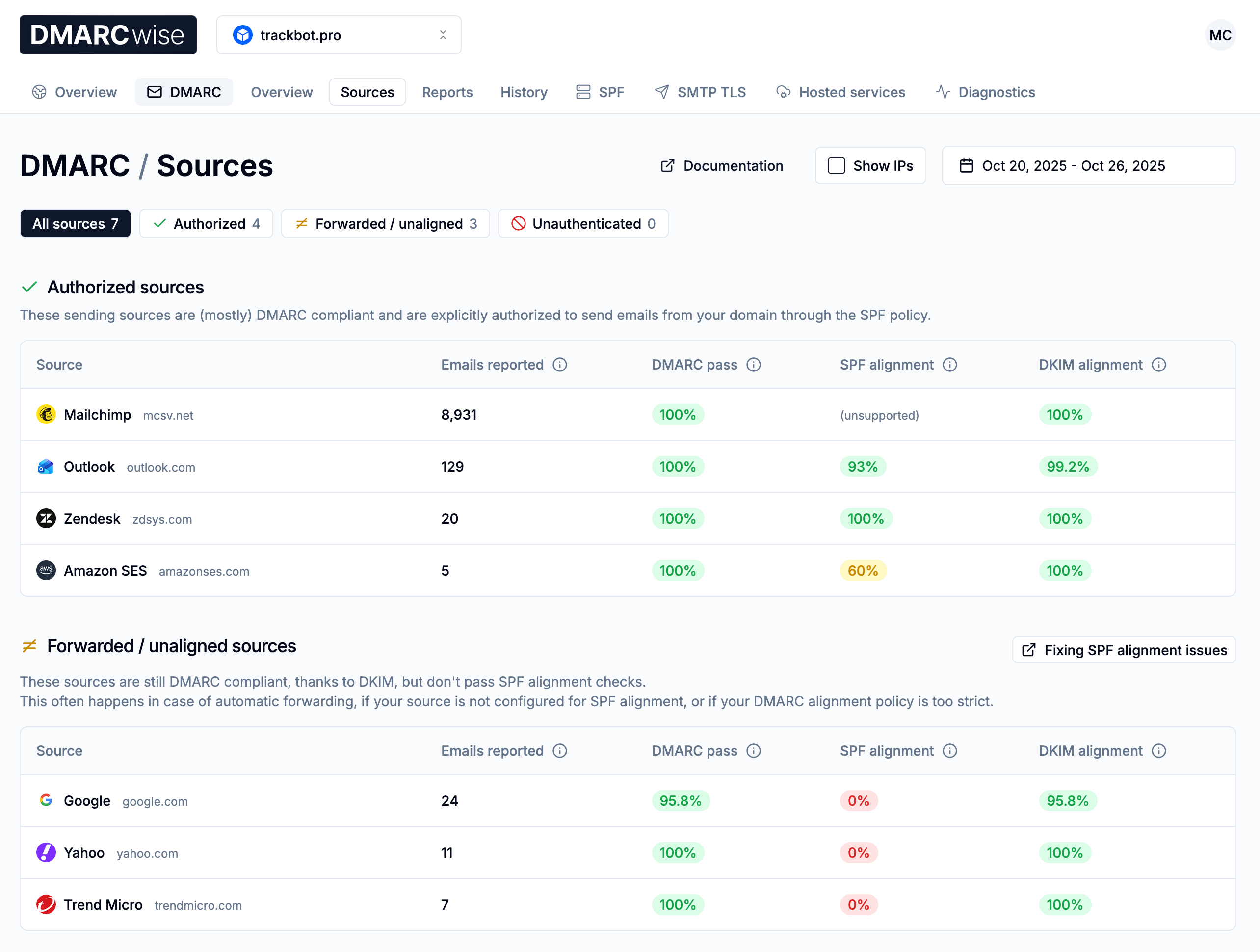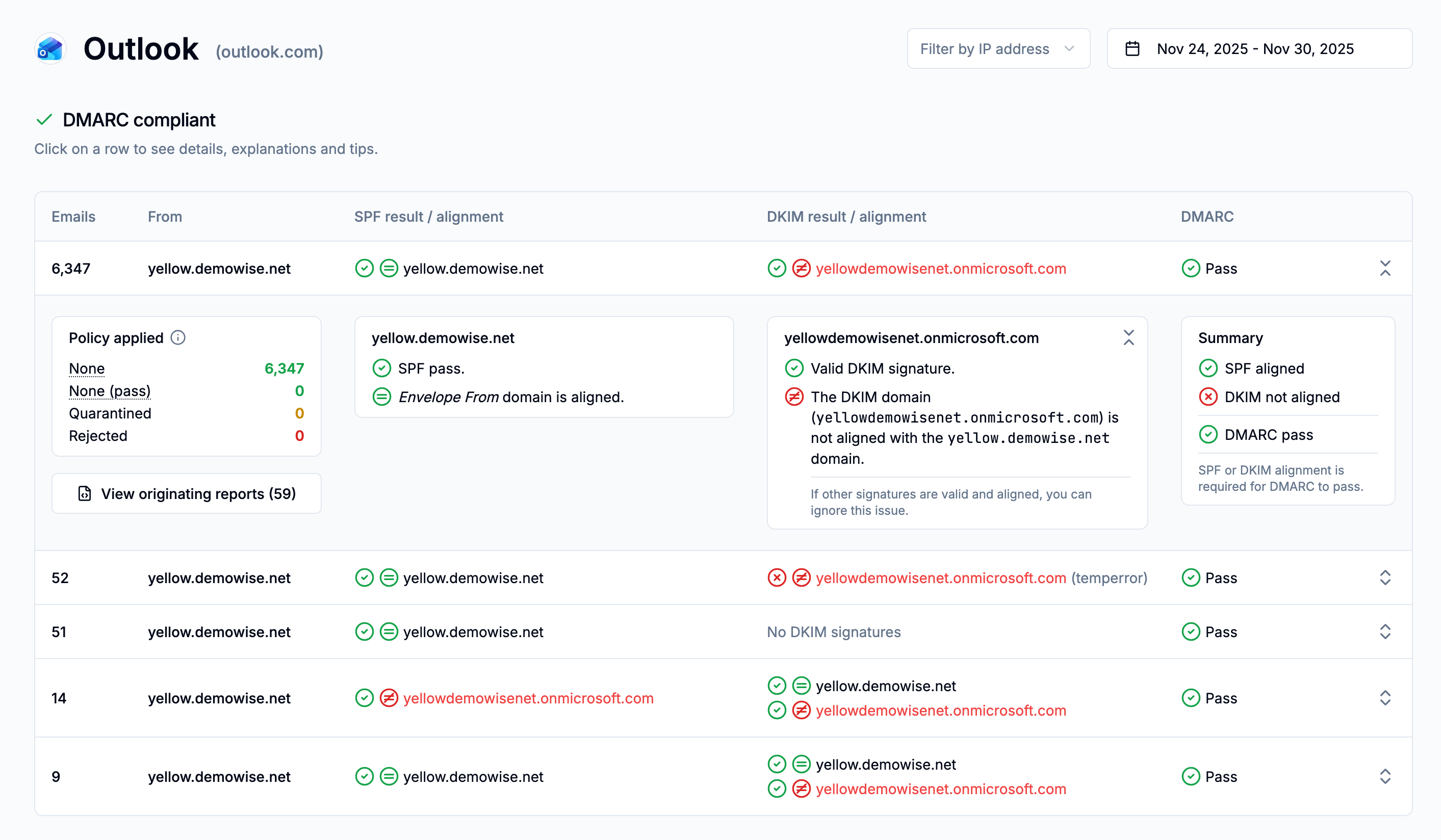As soon as you receive some DMARC reports from destination mail servers, you’ll start to see the dashboard populated with data.
Navigate to the DMARC tab and then choose Sources to see a summary of the sending sources extracted from the DMARC reports:

Everything in this page refers to the last week of activity by default. You can change the date interval through the date picker in the top right.
DMARCwise extracts sending sources from your reports and groups them in three categories:
- Authorized sources: these sources are at least partially DMARC compliant and are explicitly authorized to send emails from your domain, primarily based on SPF.
- Forwarded/unaligned sources: usually, these sources are mail servers that forwarded your emails. Since detection of forwarding cannot be done reliably, you may also find sources that are legitimate but not SPF aligned in this section.
- Non-compliant sources: messages that fail DMARC alignment end up in this section.
Clicking on a source in the sources tables leads you to a more detailed view where you’ll be able to see why authentication or alignment failed for that source:

For more information on how to interpret this page, we recommend reading the DMARC sources documentation page.
Most of the time, you’ll find yourself browsing between the sources, which already give you a lot of useful information, but sometimes you may need more than that. For this reason, DMARCwise lets you browse the original DMARC reports, which contain the greatest level of detail.
From a DMARC source page, you can click View originating reports to see the list of reports (and thus mail receivers) that produced the data for that DMARC source, and jump to them.
Alternatively, navigate to the Reports page from the navigation menu and choose a report to see the DMARC report content nicely presented in an easy-to-use interface:
